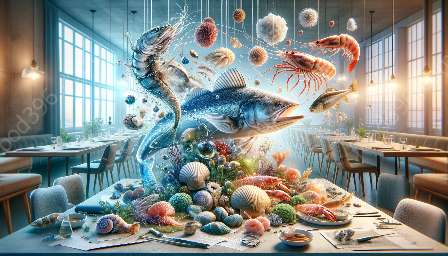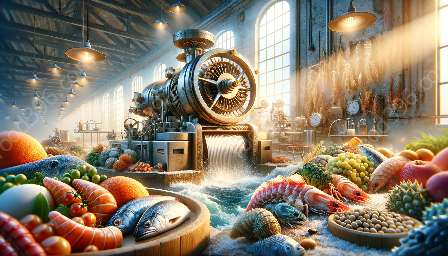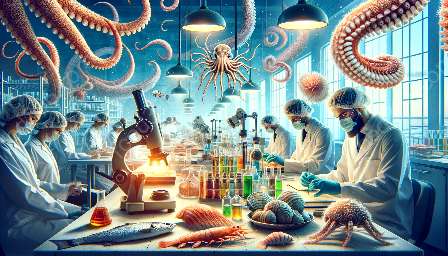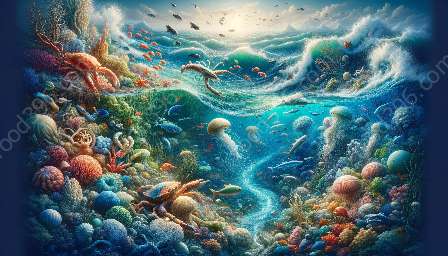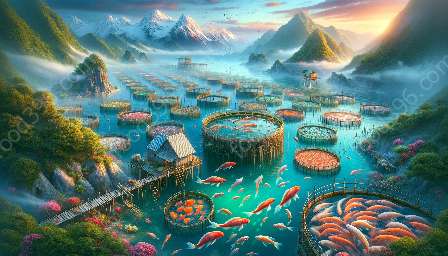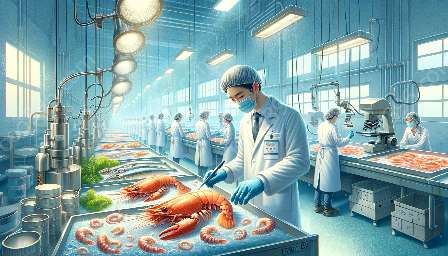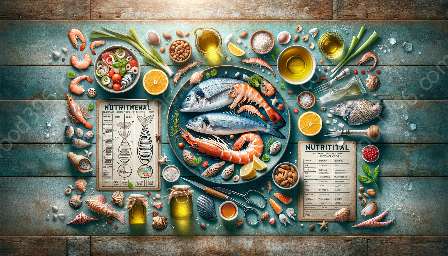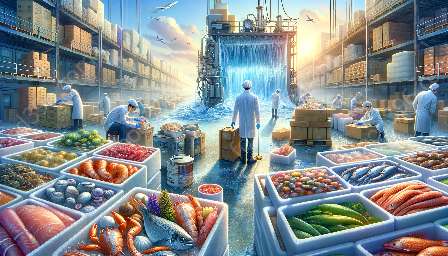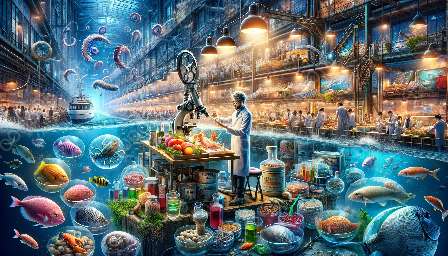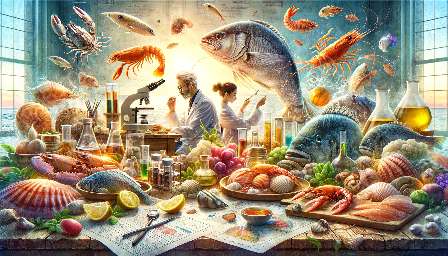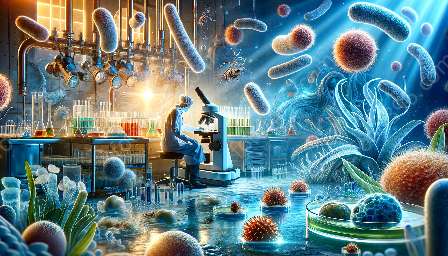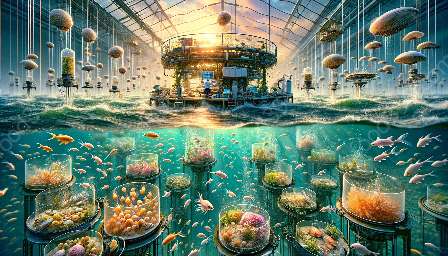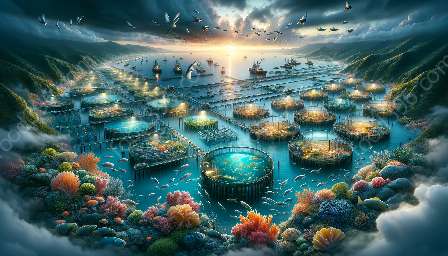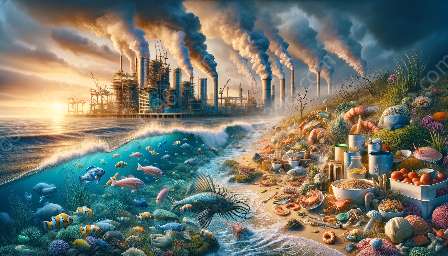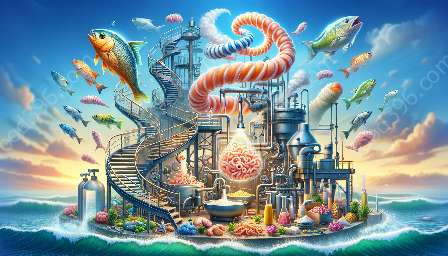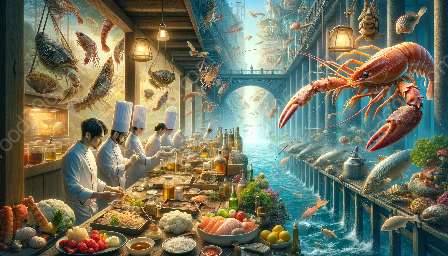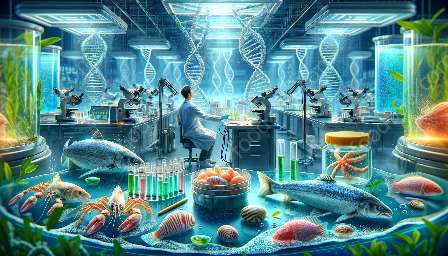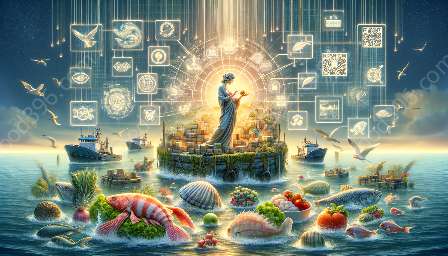Seafood contamination and pollution impacts have significant implications for seafood science and the food and drink industry. This topic cluster explores the various aspects of contamination and pollution and their effects on seafood, providing in-depth explanations and insights.
Understanding Seafood Contamination
Seafood contamination refers to the presence of harmful substances, such as heavy metals, industrial chemicals, and microbial pathogens, in seafood products. Contaminants can enter the marine environment through various sources, including industrial discharges, agricultural runoff, and atmospheric deposition. Once in the water, these contaminants can accumulate in fish and shellfish, posing health risks to consumers.
Sources of Contamination
The sources of seafood contamination are diverse and multifaceted. Industrial activities, such as mining, petrochemical production, and manufacturing, release pollutants into water bodies, leading to contamination of aquatic organisms. Agricultural practices, such as pesticide and fertilizer use, also contribute to contamination through runoff into nearby watersheds. Additionally, urbanization and improper waste disposal can introduce contaminants into marine ecosystems, further impacting seafood quality.
Effects on Seafood Quality
Contamination can compromise the safety and quality of seafood products, posing health risks to consumers. Heavy metals, such as mercury and lead, can accumulate in fish tissues, leading to potential toxicity upon consumption. Similarly, microbial contaminants, such as bacteria and viruses, can cause foodborne illnesses when present in seafood. These factors underscore the importance of monitoring and mitigating contamination to ensure the safety of seafood for human consumption.
Impacts of Pollution on Seafood
Pollution, including plastic debris, oil spills, and chemical pollutants, can have detrimental effects on marine ecosystems and the seafood supply chain. The pollution of coastal and oceanic environments poses challenges for seafood production and consumption, necessitating a deeper understanding of its impacts.
Plastic Pollution and Seafood
The proliferation of plastic waste in marine environments has emerged as a growing concern for seafood contamination. Plastics can break down into smaller fragments, known as microplastics, which can be ingested by aquatic organisms, including fish and shellfish. This ingestion can lead to physical harm, internal damage, and bioaccumulation of toxins in seafood, affecting both environmental and human health.
Oil Spills and Seafood Contamination
Oil spills, whether from industrial accidents or transportation mishaps, pose immediate and long-term threats to seafood quality and marine ecosystems. The release of crude oil and its byproducts can contaminate the water, sediments, and aquatic organisms, leading to bioaccumulation of toxic compounds in seafood. This contamination can have far-reaching ecological and economic consequences, impacting fishery resources and seafood markets.
Chemical Pollutants in Seafood
The presence of chemical pollutants, such as pesticides, heavy metals, and persistent organic pollutants, in marine environments can result in contamination of seafood. These pollutants can enter the food chain through bioaccumulation, affecting the quality and safety of seafood products. Efforts to control and mitigate chemical pollution are essential to safeguarding the integrity of seafood and protecting consumer health.
Seafood Science and Sustainability
Understanding seafood contamination and pollution impacts is integral to the broader field of seafood science and sustainability. Researchers and industry professionals are continuously exploring innovative approaches to ensure the safety, quality, and sustainability of seafood production and consumption.
Monitoring and Analysis
Advanced analytical techniques, such as chromatography, mass spectrometry, and DNA sequencing, are employed to monitor and analyze seafood for contaminants. These methods enable the identification and quantification of pollutants, supporting regulatory compliance and quality assurance in the seafood industry.
Sustainable Practices
The adoption of sustainable practices, including responsible aquaculture, fisheries management, and ecosystem conservation, is central to reducing the impacts of contamination and pollution on seafood. By promoting sustainable seafood production and consumption, stakeholders can work towards minimizing environmental stressors and enhancing the resilience of marine ecosystems.
Consumer Awareness and Education
Educating consumers about seafood safety, sustainability, and the impacts of contamination and pollution is crucial for fostering informed choices and supporting the demand for responsibly-sourced seafood. Transparent labeling, certification programs, and outreach initiatives all play vital roles in empowering consumers to make environmentally conscious decisions when selecting seafood products.
Implications for the Food and Drink Industry
The ramifications of seafood contamination and pollution extend to the food and drink industry, influencing supply chains, regulatory frameworks, and consumer preferences. Stakeholders within the industry must address these challenges to uphold the integrity and safety of seafood-derived products.
Regulatory Compliance
Governmental regulations and industry standards play a pivotal role in mitigating seafood contamination and pollution. Establishing and enforcing stringent guidelines for water quality, waste management, and food safety is essential to safeguarding the interests of consumers and maintaining the reputation of seafood products.
Sustainable Sourcing and Traceability
Emphasizing the sourcing of seafood from reputable, sustainably-managed fisheries and aquaculture operations is essential for promoting transparency and traceability within the supply chain. By prioritizing sustainable sourcing practices, the food and drink industry can contribute to mitigating pollution impacts and supporting environmentally-responsible seafood production.
Innovation and Collaboration
Encouraging innovation and collaboration across the food and drink industry fosters the development of technologies and practices aimed at reducing contamination and pollution in seafood. From novel packaging solutions to waste reduction initiatives, industry stakeholders can drive positive change by working together to address sustainability challenges.
Consumer Preferences and Ethics
As consumers become increasingly conscious of environmental and ethical considerations, their preferences for sustainably-sourced, uncontaminated seafood products are shaping the market landscape. Meeting consumer expectations for high-quality, responsibly-sourced seafood is paramount for industry success and long-term viability.
Conclusion
Seafood contamination and pollution impacts are multifaceted issues that intersect with seafood science, sustainability, and the food and drink industry. By comprehensively understanding the sources, effects, and implications of contamination and pollution, stakeholders can work towards fostering a safer, more resilient seafood supply chain and promoting environmental stewardship. Through collective efforts and informed decision-making, the challenges posed by contamination and pollution can be effectively addressed, ensuring the continued availability of high-quality, sustainable seafood for generations to come.
